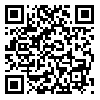Volume 27, Issue 11 (2-2020)
JSSU 2020, 27(11): 2091-2098 |
Back to browse issues page
Download citation:
BibTeX | RIS | EndNote | Medlars | ProCite | Reference Manager | RefWorks
Send citation to:



BibTeX | RIS | EndNote | Medlars | ProCite | Reference Manager | RefWorks
Send citation to:
Bouzarjomehri F, Omidvar F, Zare M H, Nakhaeine Nejad M. Evaluation of Patient's Dose and Estimate of Cancer Risk in Electrophysiology Studies and Ablation in Cath Lab Center of Afshar Hospital, Yazd, Iran. JSSU 2020; 27 (11) :2091-2098
URL: http://jssu.ssu.ac.ir/article-1-4345-en.html
URL: http://jssu.ssu.ac.ir/article-1-4345-en.html
Abstract: (3285 Views)
Introduction: Today electrophysiology studies and ablation have been developed due to increasing arrhythmias disorder of heart. In these diagnostic – treatments methods, the use of fluoroscopy can be causes patient radiation dose, therefore evaluation of patient's absorbed dose is necessary to protection of the radiation. The aim of this study was to evaluate the absorbed dose in patients undergoing electrophysiology and cardiac ablation and to estimate their risk of cancer in Yazd Afshar Hospital.
Methods: This study was a cross-sectional study. In this study, the mean absorbed dose of referral patients for electrophysiology studies and ablation had been measured in the cat. Lab of Afshar Hospital, Yazd. The dosimeter had been used in this research was KAP meter, the M4 DIAMENTOR made in Germany that was able to measure dose-area product and time of the fluoroscopy. The patient effective dose was calculated by the PCXMC software from dose-area product.
Results: The mean dose-area in ablation and electrophysiology studies was respectively 153.34±105.32 and 5.62 14.88 Gy.cm2 and the radiation time range was recorded 3.32 to 68.65 minutes and 1.03 to 6.28 minutes, respectively. The mean effective dose of ablation and electrophysiology studies were respectively 16.38 and 1.65 mSv. The cancer risk per ten thousands of patients, who were under the ablation and electrophysiology examinations were estimated 13 and 1.3 people, respectively.
14.88 Gy.cm2 and the radiation time range was recorded 3.32 to 68.65 minutes and 1.03 to 6.28 minutes, respectively. The mean effective dose of ablation and electrophysiology studies were respectively 16.38 and 1.65 mSv. The cancer risk per ten thousands of patients, who were under the ablation and electrophysiology examinations were estimated 13 and 1.3 people, respectively.
Conclusion: Increasing of patient dose due to ablation in this study relation to the other studies can be due to long old of image intensifier device.
Methods: This study was a cross-sectional study. In this study, the mean absorbed dose of referral patients for electrophysiology studies and ablation had been measured in the cat. Lab of Afshar Hospital, Yazd. The dosimeter had been used in this research was KAP meter, the M4 DIAMENTOR made in Germany that was able to measure dose-area product and time of the fluoroscopy. The patient effective dose was calculated by the PCXMC software from dose-area product.
Results: The mean dose-area in ablation and electrophysiology studies was respectively 153.34±105.32 and 5.62
Conclusion: Increasing of patient dose due to ablation in this study relation to the other studies can be due to long old of image intensifier device.
Type of Study: Original article |
Subject:
Medical Physics
Received: 2017/10/3 | Accepted: 2018/04/21 | Published: 2020/03/10
Received: 2017/10/3 | Accepted: 2018/04/21 | Published: 2020/03/10
Send email to the article author
| Rights and permissions | |
 |
This work is licensed under a Creative Commons Attribution-NonCommercial 4.0 International License. |







